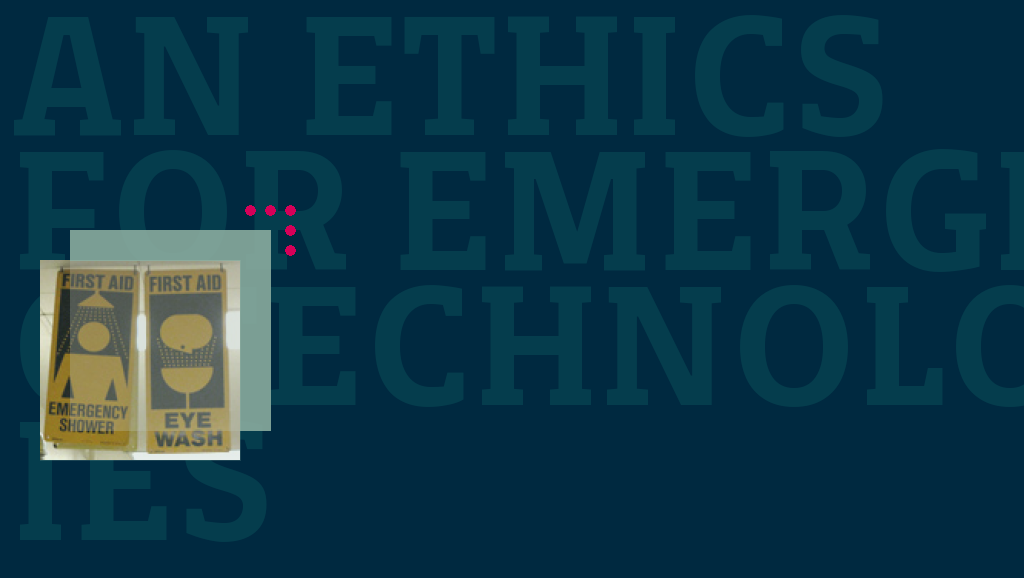As a follow on from my previous introduction to synthetic biology posting I would like to take a look at the recent report entitled Ethical Issues in Synthetic Biology; a review of the debates.
The report published in June 2009 is co-authored by Erik Parens, Josephine Johnston and Jacob Moses, all of The Hastings Center in Garrison New York, as part of the Synthetic Biology Project at the Woodrow Wilson International Centre for Scholars in Washington DC.
In the preface the Director of the project David Rejeski states that ‘Ethical concerns are too often addressed after investments in science have been made and technologies are already mature and in the marketplace. At that point, neither the research community nor policymakers have a strong incentive to address ethical issues for fear that any debate may stifle technological advance and innovation. But given the rate at which new technologies are emerging and converging, this paper argues that a comprehensive ethical approach is needed early to best foster the wide public acceptance and support of new technologies such as synthetic biology’.
Following on from this argument the executive summary proposes a move away from thinking of ethic issues as being valid for small sectors of technological advancement, for example ethics for nano-technology or an ethics for engineering practices. The authors argue that as these emerging technologies tend to converge it would be more correct to think about an ethics for emerging technologies.
For the purpose of the report ethical concerns are divided into 2 broad categories, those concerning physical harm and those concerning non-physical harm. There are also 2 types of framework sited through which the problem can be addressed, one described as ‘pro-actionary’ and the other ‘pre-cautionary’. An individual’s positioning within these frameworks is largely down to their view of the technologies involved. The taking of either a generally positive or on the other hand generally negative standpoint will effect the type of actions seen as correct and justified.
An explanation of ‘who is doing what, where, and how is it funded?’ follows, with an explanation of the somewhat intertwined strands of research being carried out by the 4 major players. The report continues by discussing the interconnectedness of various emerging technologies, promoting the argument that ‘Recognizing the interconnectedness of the science can also help us recognize the interconnectedness of the ethical issues’.
The authors go on to the discuss potential benefits and harms posed by synthetic biology using their previously defined categories of physical and non-physical harm, and then discuss the pro-actionary and pre-cautionary frameworks. The discussion raises questions of regulation from outside or inside the community, trust, public participation and perception, giving several case study examples.
The final section before the conclusion discusses the problem of perceptions of non-physical harm. Non-physical is much more difficult to define than physical harm as an individual’s perception is greatly affected by their philosophical starting point. An individual does not come to a conclusion purely on the basis of logic, but other aspects such as religion and beliefs about well-being and lifestyle choices come into play when deciding if a possible outcome should be seen as positive or negative.
The conclusion outlines the arguments presented in the report, arguing that although the issue of physical harm is being addressed, the issue of non-physical harm has received ‘short shrift’ in the discussion of synthetic biology. The problem stems from the lack of agreement between scientists about the precise nature and legitimacy of these concerns, let alone what might be done to address them. The authors go on to suggest that ‘those who fund and lead synthetic biology seek to respectfully and carefully describe, and critically evaluate, concerns about both physical and non-physical harms. In so doing, they should draw on our experience of these concerns in the context of other emerging technologies, including genetics, neuroscience and nanotechnology. How were these concerns conceptualized, what values were appealed to in their description, how were the concerns addressed and what lessons can be critically applied to the case of synthetic biology?’
They argue that these problems can be clarified through discussion and through refering to previously gained experience in the related fields outlined above, but that time may be needed leading to a possible slowing down of scientific advancement. Substantial financial investment will also be necessary.
They conclude however that ‘Experience with other emerging technologies strongly suggests that this would be time and money well spent’.
This report is very easy to read and offers plenty of food for thought. The references throughout the text offer anyone interested plenty of reading matter and the breadth of publications demonstrates that the problem of ethics in emerging technologies is being widely addressed.
(photo: Synthetic Biology Research at NASA Ames – by Alexander van Dijk from Flickr)
















